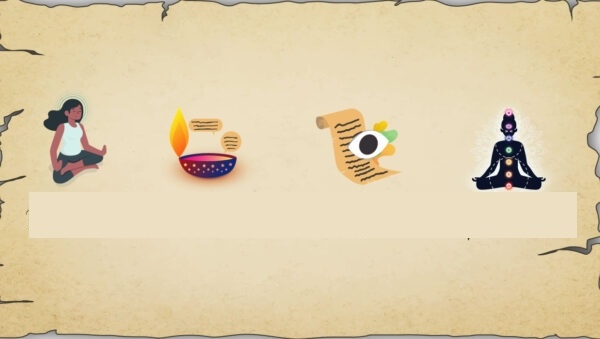Dynamism Of IndianTradition
| Date :01-Dec-2024 |

By DR BHUSHAN KUMAR UPADHYAYA :
A
number of civilisations
came into existence in
ancient times. All died
out or were wiped out by
external aggression except the
two Indian and Chinese. With
the prolonged communist
regime of China, the ancient
Chinese civilisation has been
decimated to a great extent.
Each and every aspect of life is
dictated by the communist
rule. Diversity and differences
of opinions have suffered
irreparable loss on Chinese
land. On the contrary, India
has adopted a constitution
which is in consonance with
the dynamism of Indian tradition. Dynamism is the variety
of ideas with the adaptive
nature of the society. Life, culture, philosophy, art, literature, etc, are allowed to evolve
and change with the changing
stream of life.
The Rigveda is the oldest
text which is full of hymns
where natural forces are worshipped as divine. The
Yajurveda is full of rituals. The
Sama Veda contains hymns
with intonations and specific
rhythms. The Atharva Veda
deals with more mundane
subjects. What followed the
Vedas are Brahmanas,
Aranyakas and Upanishads.
They all have different contents. Brahma as are more ritualistic in nature.
Aranyakas
are the products of the reflective minds in solitude and
forests. Upanishads are the
best jewels about the world,
individual and universal consciousness. The seers of
Upanishads realised that the
same Supreme Reality vibrates
in different forms and one can
realise the oneness of the existence through one pointedness
of the mind.
ThusYoga came into existence. There are numerous
types of Yoga like GyanaYoga ,
BhaktiYoga and KarmaYoga.
GyanaYoga emphasises the
intellectual aspect of human
personality. BhaktiYoga is the
emotional bonding with the
divine. KarmaYoga is the selfless discharge of the duty. Side
by side emerged the six systems of Vedic philosophy
named Mimansa, Sankhya,
Yoga, Nyaya, Vaisheshik and
Vedant. Each system views the
ultimate truth through its
own prism. Then came the
age of great epics like the
Ramayana and the
Mahabharata.
The eighteen
Puranas contain very colourful narratives of the different
aspects of human life. The six
Vedangas or the limbs of the
Vedas are the beautiful addition to the cultural tradition of
India. They have given birth to
a very precious and long tradition of knowledge systems.
They are Shiksha or the science of pronunciation,
Chhanda or prosody, Kalpa or
rituals, Vyakarana or grammar, Nirukta or linguistics and
Jyotisha or astronomy and
astrology.
Parallel to the Vedic systems
of Indian knowledge, there
evolved non Vedic streams of
philosophy which are called
Nastika Darshana. The
Buddhism, Jainism, Charvaka,
Lokayatna, etc are the best
repositories of different dimensions of human life. They contain great wisdom of the ages.
The existence of many world
class universities like Nalanda,
Takshashila, Vikramashila, etc
are the best examples of the
highly evolved thought
process of India tradition. The
beauty of the Indian tradition
lies in the fact that despite the
manifest differences and divergence all types of thoughts
have evolved on the Indian
subcontinent.
The culture of Shakas, Huns,
Kushans, Parthians, etc who
came to India became an
inseparable part of the Indian
tradition. Christianity,
Zoroastrianism, Islam, etc
have also got integrated into
the wider cauldron of Indian
tradition. Despite the conflicts
and contradictions, India has
not fossilised its thinking , but
is marching on the dynamic
path of evolution and experiments.

■(The writer is Former DG
Police & CG, Homeguards,
Maharashtra)